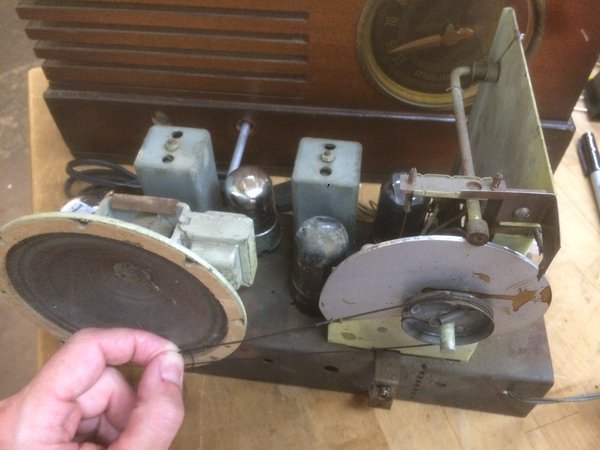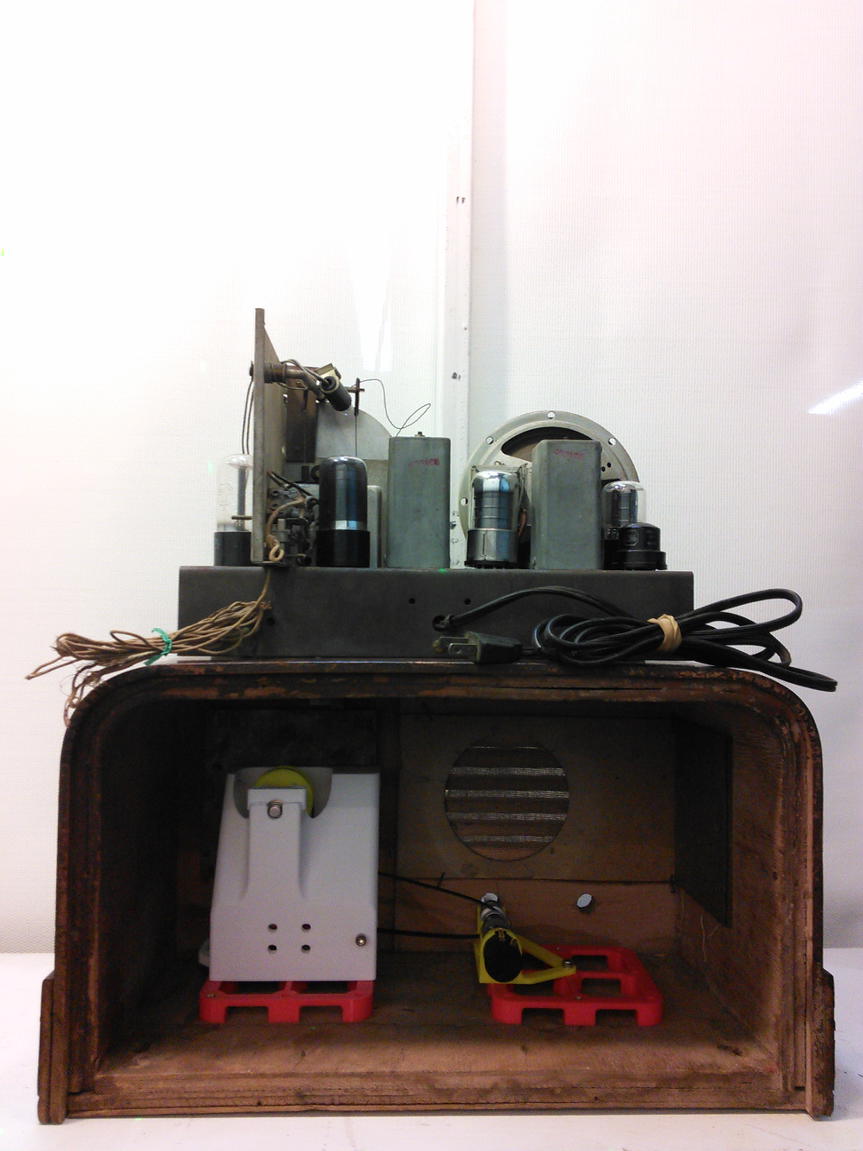Midland-radio-mechanism
Building a mechanism for a radio exhibit at the Collection of Historical Scientific Instruments in the Harvard Science Center
View the Project on GitHub rascalmicro/midland-radio-mechanism
Mechanism for inside an old Midland radio
I built a new mechanism for a Midland radio from the 40's. The goal is to preserve the mechanical operation of the radio (same tuning knob, same tuning indicator) while replacing the FM receiver with a microcontroller that reads the tuning knob and outputs the reading over USB to a computer. The computer will play a variety of different audio samples, as assembled by my collaborator and vintage friend, Halsey Burgund: @hburgund. The radio and sound installation will appear as part of an exhibit about radios at the Collection of Historical Scientific Instruments at the Harvard Science Center.

Construction
The mechanism was modeled in Solidworks. The mechanical parts came mostly from http://mcmaster.com. The plastic parts were kindly printed by my makerspace neighbor @christempleman of http://happyworkhorse.com
Gearing
The original radio used an aluminum cam to slide ferrite cores in and out of inductors. The change in inductance changed the frequency at which the radio receiver resonated, i.e. it changed the station. Pretty awesome design. I ripped all that out (although I think it might still be part of the exhibit).

The new design uses a 5-turn pot (this matches the range on the original input shaft). The rotation of the pot is reduced in two stages to 5/6ths of a rotation, or 300 degrees, which is the span of the original indicator. The two stages are: 20 teeth -> 60 teeth, then 30 teeth -> 60 teeth. This gives us 3-to-1 X 2-to-1, or 6-to-1 total.

